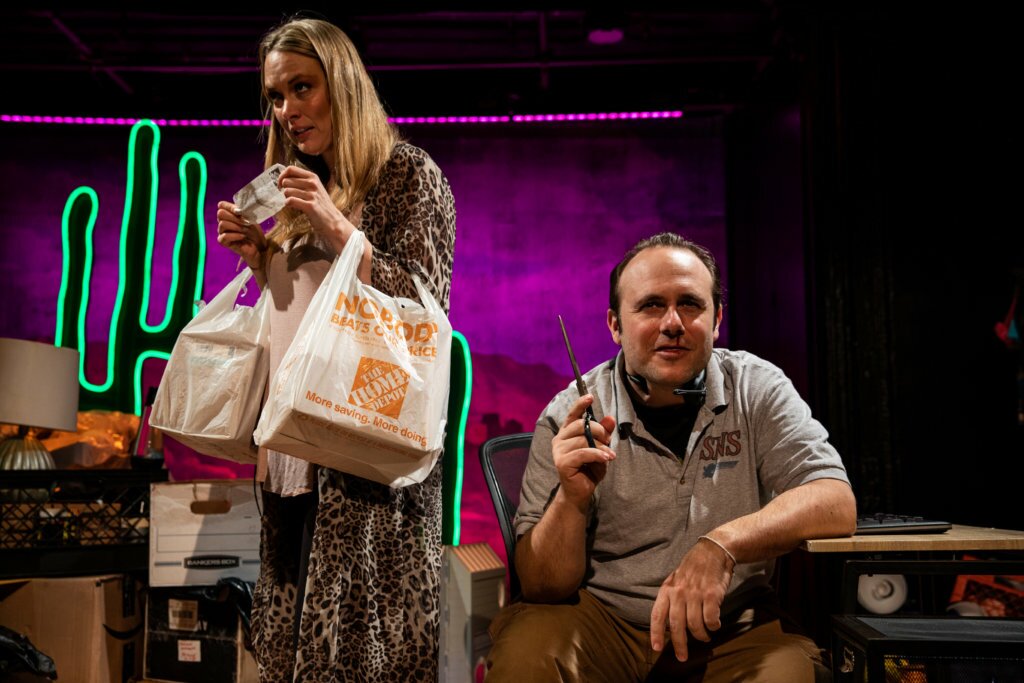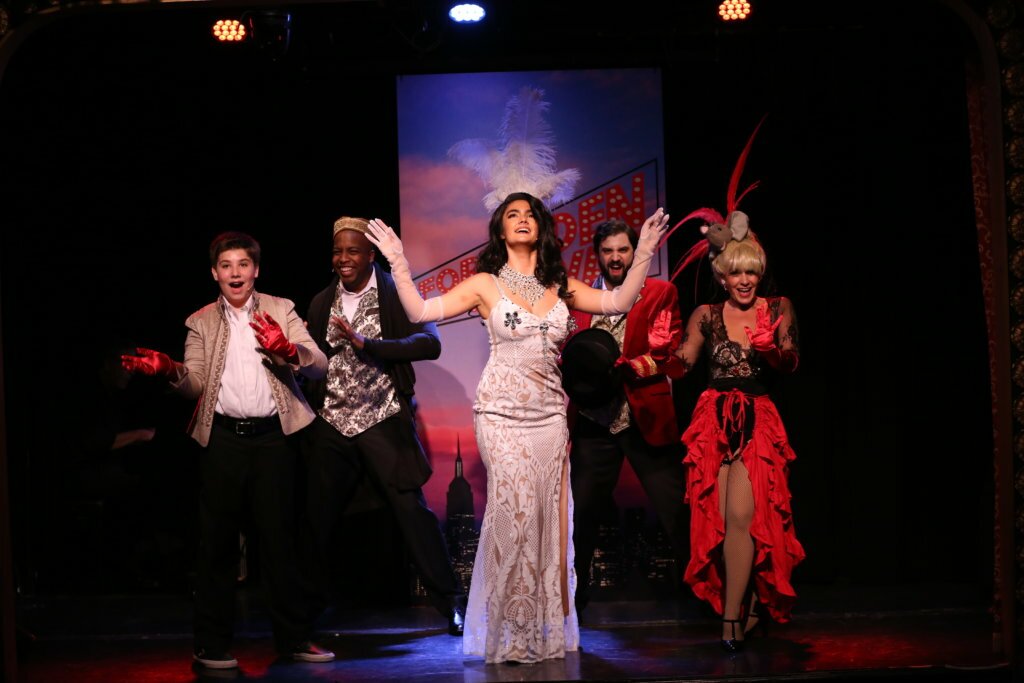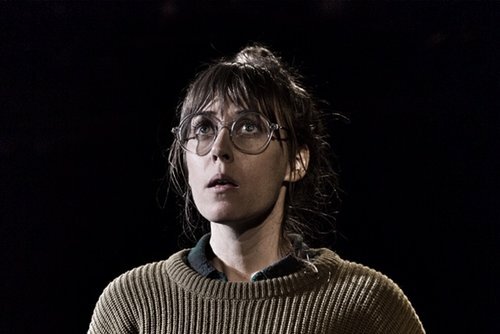
Photo by Vanessa Lenz
The Bad’uns: Clown Acts of Contagion is what happens when good clowns go bad. Created and directed by Kendall Cornell and Clowns Ex Machina, an all-women clown troupe, The Bad’uns includes Carla T. Bosnjak, Kendall Cornell, Lena Hudson, Julie Kinkle, Michaela Lind, Lucia Rich and Virginia Venk. As an ensemble, they are compelling, each donning the traditional red nose and performing some truly zany and absurd scenes. As a clown show, it’s a bit more cerebral than laugh-out-loud funny, although there are certainly some very funny moments. Overall, it excels at making pointed commentary on society’s expectations of women.
The Bad’uns is comprised of 30 or so short vignettes, each involving a combination of between one and all seven performers. (Two helpers, Maggie Tully and Rachel Weekley, wear paper bags on their heads and enter certain scenes as mummers.) Some of the pieces are songs, some are dances, some are silent, and some are monologues. Each piece touches on different themes of womanhood and is coupled with the idea of women behaving badly, how sometimes they are forced to behave badly due to circumstances and sometimes they behave badly just because.

Photo by Vanessa Lenz
In “Gimmee your Gum,” Lucia and Carla act like they are robbers holding the audience hostage, pointing their fingers in the shape of guns and intimidating the audience into giving them gum, a mint, anything to freshen their breath. Finally, they settle on taking a book from an audience member’s bag. Toy guns and other fake weapons feature prominently throughout The Bad’uns.
In a scene that made me laugh the most, a female voiceover compels Kendall to both ignore and cross the lines that society draws for us. These imaginary lines are drawn, crept up to, and crossed trepidatiously by the confused clown, unable to decide what is better: doing what the authoritative voice is telling her to do, or ignoring what she believes society is telling her to do.

Photo by Vanessa Lenz
A recurring theme is the clowns as criminals, as in “What are You In For?” where they are in a lineup and recite all the things they’ve done to get locked up, including things both hilariously minor and shockingly serious. In “Approach the Bench,” they continue the innuendo that perhaps the justice system is not wholly fair.
Throughout the show, the clowns portray all the types society associates with women, good and bad: women as delicate creatures (“Fancy Ladies and Gruel”), women as helpless, women as witches (“Burnt to Hell”), women as whores (“Sell your Body”), and women as mothers and nurturers. At the same time as they present these tropes, the clowns turn them right on their head into darkly humorous satire.

Photo by Vanessa Lenz
Clowns Ex Machina reminds us that despite how hard it can be to see the humor in a situation, it’s always worth the effort to make fun and laugh. Also, you don’t want to mess with these clowns.
The Bad’uns: Clown Acts of Contagion is playing at La MaMa through November 17.

































